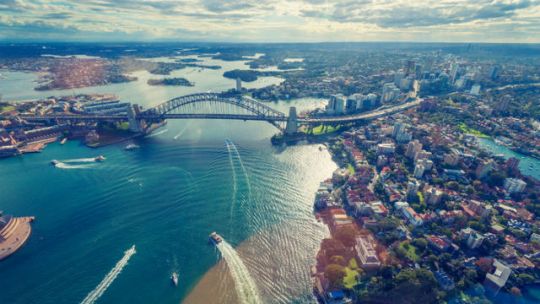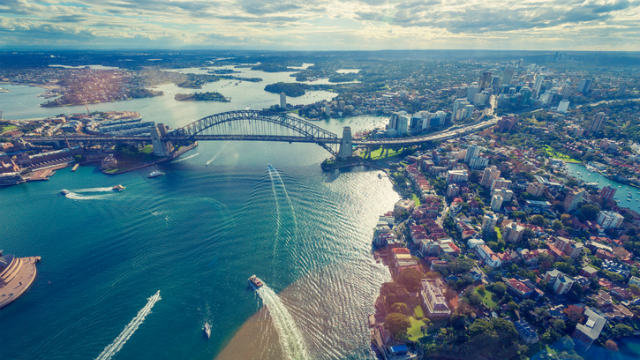NSW Keeps Top Spot in CommSec State Rankings

Despite a strong showing from Victoria off the back of increased housing demand, New South Wales is once again the best-performing Australian state according to the new State of the States report from CommSec.

The report is released quarterly and examines the performance of Australia’s states based on eight key indicators:
- Economic growth
- Retail spending
- Business investment
- Unemployment
- Construction work
- Population growth
- Housing finance
- Dwelling starts
What’s changed from the previous quarter?
The top three spots in the rankings have remained unchanged with New South Wales in first, Victoria in second and Australian Capital Territory in third.
There has been a slight reshuffling in the middle spots, with South Australia jumping from sixth to fourth ahead of Tasmania in fifth and Queensland in sixth.
The Northern Territory and Western Australia remained at the bottom of the ladder, holding seventh and eighth place respectively.
The key indicator breakdown
In addition to the overall rankings, the states were also ranked within each of the eight key indicators. Here’s the rankings for each, along with some brief information explaining them.
Economic growth
- NT
- NSW
- ACT
- Vic
- Qld
- SA
- Tas
- WA
NT held on to its spot atop the rankings for economic growth, with economic activity in parts of the territory being 31.6% above its decade-average level. NSW was close behind reaching 26% above its decade-average level, and ACT up 24.7%.
The weakest performing states, WA and Tas, were 10.7% and 11.7% above their decade-average levels respectively.
Qld may have been middle of the pack on this indicator but according to the report, “in the year to June, Queensland exports were up 39% on a year ago.”
Retail spending
- NSW
- Vic
- ACT
- Tas
- SA
- Qld
- WA
- NT
This ranking also saw the number one spot remain unchanged with NSW staying on top – retail spending in the state was 16.9% above its decade average due to a mix of strong housing sector activity, low unemployment and high home prices.
Vic took second place with its spending hitting 15.2% above its decade average for similar reasons to NSW; strong employment results and housing sector activity.
At the other end of the rankings, NT was only 5.3% above its decade-average level and WA only 8.8%.
Business investment
- NSW
- Vic
- SA
- ACT
- Qld
- Tas
- WA
- NT
NSW was on top once again and was the only state/territory to have its business spending reach above its decade-average level (5% above to be exact).
Runners-up Vic and SA were only 1.6% and 2.7% below their decade-average levels, but bottom-rung states WA and NT were 25.8% and 13% below their decade-average levels respectively.
The report noted that “equipment investment in Queensland, Western Australia, South Australia and Tasmania are all at their highest levels in two years.”
Unemployment
- NSW
- Tas
- SA
- NT
- Qld
- Vic
- ACT
- WA
Yet another win for NSW, possessing what the report described as arguably “the strongest job market in the nation,” with a 4.6% jobless rate – the lowest it’s been in nine years.
Tas jumped from third to second, with a jobless rate of 5.9% (4.1% below its decade-average level) and a “solid” annual employment growth rate of 3.9% – slightly higher and it would have been the fastest growth rate in 32 months.
The NT fell from first to fourth with its jobless rate at a 17-month high and 3.9% above its decade-average level – employment in the state fell by 2.4% p.a.
Qld had the strongest annual employment rate with 4.1%, ahead of Tas (3.9%), and Vic (3.1%).
Construction work
- Vic
- NSW
- NT
- ACT
- SA
- Tas
- Qld
- WA
Six of the eight states and territories saw construction work rates above their decade-average levels; an improvement from the previous quarter, in which only five states and territories saw growth. WA and NT saw construction work rates decrease compared to the same time last year.
Vic took out the top spot with construction work completed hitting 25.3% higher than its decade-average level; NSW was close behind, with construction activity hitting 22.8% above its decade-average level.
WA and Qld saw construction work completion rates nearly 39% and 17.7% below their decade-average levels respectively.
Population growth
- Vic
- ACT
- NSW
- Qld
- WA
- SA
- Tas
- NT
Population growth is important as it is a driving factor in the strength of retail spending and housing demand. Only three states saw population growth higher than their decade-average levels: Vic, NSW, and Tas. These states saw population increases of 2.43%, 1.6% and 0.6% respectively. Despite this increase, Tas still experienced the second lowest population growth in Australia.
The states/territories closer to the bottom of the rankings, NT and SA, saw population growth rates 91.1% and 37.9% below their decade-average levels.
Housing finance
- ACT
- Vic
- NSW
- Tas
- Qld
- SA
- WA
- NT
The report noted that “housing finance is not just a leading indicator for real estate activity and housing construction but it is also a useful indicator of activity in the financial sector.”
Six of the country’s states and territories – ACT, Vic, NSW, Tas, Qld and SA – saw housing financing commitments at a rate above their decade-average levels.
All of those states except Qld and SA saw the trend level of commitments surpass the level seen a year ago.
NT came in last yet again, with trend commitments falling 20.6% below its decade-average level; WA was next weakest at 12% below its decade-average level.
Dwelling starts
- NSW
- Vic
- SA
- Qld
- ACT
- Tas
- WA
- NT
This indicator was a bit of a mixed bag with the NSW and Vic market staying strong with rates 56% and 19.1% above their decade-average levels (partially due to above-average population growth), but the WA market almost hit a five-year low.
At the bottom of the rankings, dwelling starts in the NT and WA were 45.3% and 18.7% below their decade-average levels.
Tas was the only state or territory to see an increased number of dwelling starts from a year earlier.
The report noted that as a whole, the data “shows Australia’s economies to be in good shape.” It also noted that WA, a consistently low performer, was still feeling the effects of the mining construction boom ending, however its improving job market meant the state’s economy may be looking at an uptick in the near future.






